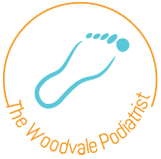Does your child have pain in the heel especially when squeezing the edges?
Do they limp or have pain/discomfort on standing after sleeping or rest?
Does their pain increase after sport?
What is Severs Disease?
Sever’s disease is not actually a disease but an inflammation or disturbance of the growth plate of the heel bone in growing children.
It presents as pain in the heel, caused by repetitive stress and is common in active, growing children between the ages of 8-12.
Why does Severs disease occur?
All growing bones have growth plates at the end of the bones which is where the body adds new bone to lengthen our bones. As the growth plates aren’t as strong as the surrounding bone, they can be vulnerable to irritation and damage if placed under repetitive tension and strain.
In Sever’s disease, the heel bone (calcaneus) grows faster than the soft tissues (achilles) that attach to it. As the tight Achilles repetitively pulls on the back of the heel, it irritates the nearby growth plate, and pain starts. Once we stop growing, the growth plates turn to solid bone and the pain will resolve. However, it’s not much fun having pain all that time and participation in sport and exercise may be limited so Podiatry intervention is crucial.
What causes Severs?
- High impact Sport such as running, basketball, football, netball, soccer etc
- Heavier or taller children
- Hard playing surfaces
- Excessive pronation (rolling in)/flat feet
- Sudden increase of activity such as start of sports season
- Unsupportive footwear or lack of cushioning
- Tight muscles – can often occur after a sudden significant growth spurt
What can I do to treat Severs?
- Ice and/or heat therapy
- Reduced (not complete avoidance) physical activity
- Stretching and strengthening exercises
- Strapping
- Appropriate Footwear
- Avoid being bare foot
- Heel raises and/or orthotics to reduce the strain on the arch and heel
An individualised plan will be created by your podiatrist following your assessment
